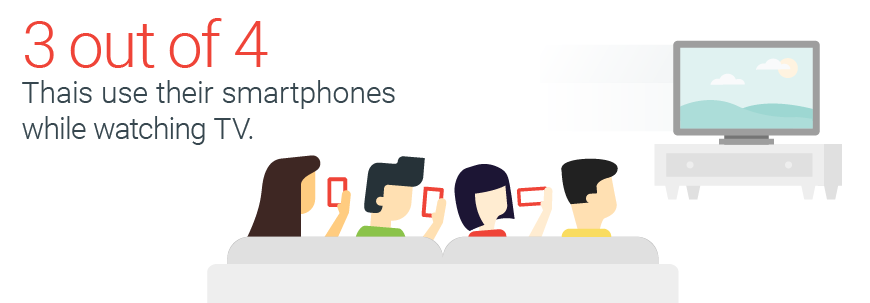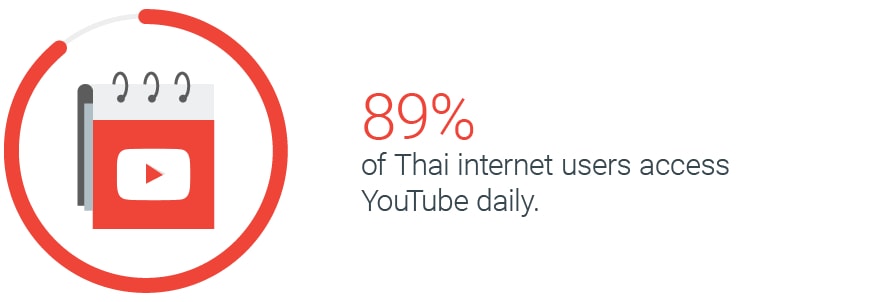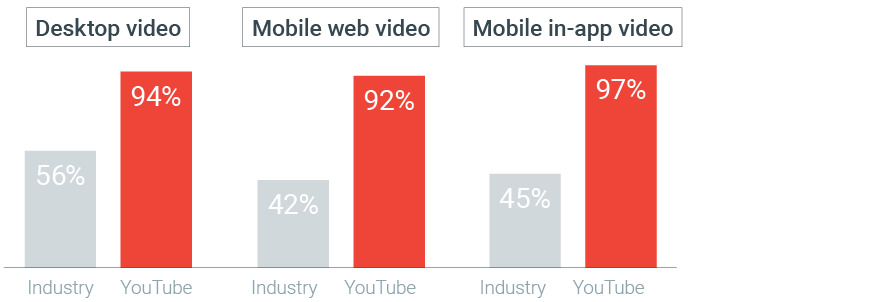Thais lead the world in multi-screening and multitasking. Consumers’ attention is fragmented across numerous devices and platforms, so the challenge for Thai marketers today is to get noticed in a world where reach no longer automatically equals awareness.
In Thailand, multi-screening has practically become a national pastime. Three out of four Thais use their smartphones while watching TV,1 making Thailand the #1 country in the world for multi-screening. And smartphone sales aren’t slowing down. Every year, the number of smartphones sold is equal to one-quarter of the entire population of Thailand.1

Likely because Thais are such high-volume digital consumers, marketers spend more on advertising in Thailand than in other Southeast Asian countries.2 This sizeable spend is all focused on one thing: capturing consumers’ attention.
Today, reach is plentiful—and attention is scarce
In the old world, reach could be achieved by spending big money on a handful of TV spots. As long as marketers got their ads on during the right TV shows, they were guaranteed a more-or-less captive audience. In those days, reach was scarce and attention plentiful.
Today, that dynamic has basically flipped. Given all the platforms Thais consume content on, achieving wide reach is fairly simple. But precisely because Thais consume so much content on so many different devices at once, getting and earning their attention has become the primary challenge.
In light of this reversal, mere exposure to your message is no longer enough. Marketers need to look beyond reach to measure the true effectiveness of ad spend. Ads need to to be actually seen—and heard—to be effective. It’s time to measure for attention.
Measuring for attention on YouTube
Video captivates audiences due to its potent combination of sight, sound, and motion. And in Thailand, as digital consumption goes up, so does its love affair with YouTube. Estimates have YouTube reaching over 90% of internet users in Thailand,3 with 89% of those people accessing YouTube daily.3 So every single day, a huge percentage of the population goes to YouTube ready to watch and engage with the videos and communities they love.

This is crucial for marketers because not only do Thais spend lots of time on YouTube, they also give it their full attention. Our research shows that despite all the changes in the video landscape, attention is still all about the combination of sight + sound + motion. So on YouTube, attention is measured by looking at viewability + audibility + watch time.
Viewability: The ad is on the active screen
Viewability measurements determine whether someone actually sees an ad. The industry standard definition of a viewable ad is having at least 50% of the video’s size or pixel count on the screen for at least two seconds.4
Industry-wide, less than half of video ads are viewable.4 That’s because a person can often just scroll past a video player to other content on the screen. On many sites, videos aren’t necessarily the main focus. Conversely, on YouTube, where people specifically go to watch video, 93% of ads are viewable across all platforms.5

Audibility: The ad is being heard
Viewability gets a lot of scrutiny in the industry, but audibility is just as important. Research shows that people pay 2.5X as much attention to ads that are both viewable and audible as those that aren’t.6
The industry standard for audibility is when the volume is turned on and up to at least 10%.4 So if people can see but can’t hear an ad while it's auto-playing in a feed or on the side of a page, it isn’t considered to be audible. On YouTube—again, where people are primed and ready to watch video—95% of ads are audible.5
Watch time: The ad is running
Watch time is the ultimate attention metric because it measures whether an ad can hold an audience’s attention. Our research shows that users who watch an ad for more than three seconds experience higher brand awareness, higher ad recall, and higher consideration than those who watch for less time.6 The longer you have viewers’ attention, the more impactful your ad is.
Attention drives impact
Attention is the most valuable commodity for Thai marketers because it’s not only rare, but it also drives real impact. When you have someone’s attention, you can give them new ideas and shape their preferences. Quality reach on platforms like YouTube—where you can be sure that ads are seen, heard, and watched—will help Thai marketers move consumers down the marketing funnel.






